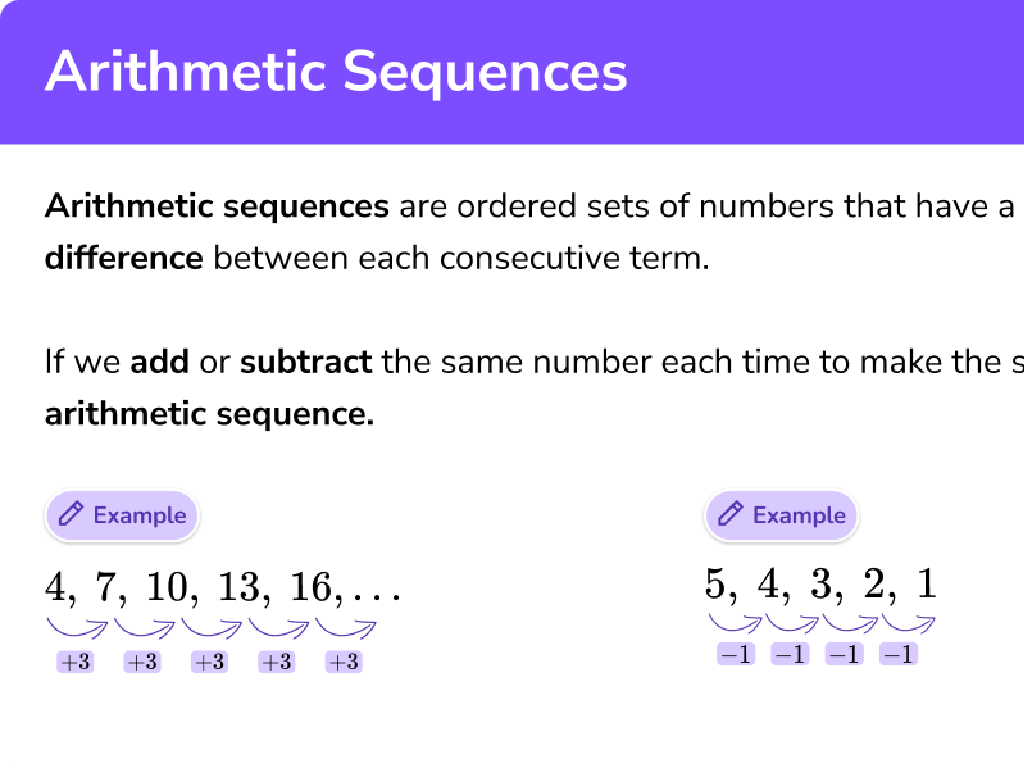Parts Of Speech: The Pronoun
Subject: Language arts
Grade: High school
Topic: Grammar
Please LOG IN to download the presentation. Access is available to registered users only.
View More Content
Welcome to Grammar: Understanding Pronouns
– Overview of Parts of Speech
– Defining Pronouns
– Pronouns replace nouns to avoid repetition, e.g., ‘he’, ‘she’, ‘it’
– The Role of Pronouns in English
– They make sentences less cumbersome and prevent overuse of nouns.
– Examples of Pronouns in Sentences
– ‘Jane saw John and called to him’ instead of repeating ‘John’
|
This slide introduces the concept of pronouns within the broader topic of parts of speech. Begin by briefly revisiting the parts of speech to provide context. Then, define pronouns as words that substitute for nouns, which is essential for creating variety and avoiding redundancy in language. Discuss the importance of pronouns in constructing clear and concise sentences, and how they contribute to the fluidity of English. Provide examples to illustrate how pronouns function within a sentence structure. Encourage students to identify pronouns in their reading and writing to enhance their understanding of this fundamental grammatical component.
Exploring Types of Pronouns
– Personal Pronouns usage
– Subjects or objects in a sentence: I, you, he, she, it, we, they
– Possessive Pronouns function
– Show ownership: mine, yours, his, hers, ours, theirs
– Reflexive Pronouns and their role
– Reflect back to the subject: myself, yourself, himself, herself, itself, ourselves, yourselves, themselves
|
This slide aims to introduce students to the different types of pronouns and their functions in sentences. Personal pronouns replace specific nouns and can act as either the subject or the object of the sentence. Possessive pronouns indicate ownership and are used to avoid repeating the noun. Reflexive pronouns are used when the subject and the object of the sentence are the same, and they end in ‘-self’ or ‘-selves.’ Encourage students to create sentences using each type of pronoun to solidify their understanding. Provide examples and ask students to identify the pronouns in each case to ensure comprehension.
Subjective and Objective Pronouns
– Subjective pronouns usage
– Used as the subject of a sentence; who performs the action
– List of subjective pronouns
– I, you, he, she, it, we, they
– Objective pronouns usage
– Used as the object of a sentence; who receives the action
– List of objective pronouns
– me, you, him, her, it, us, them
|
This slide introduces the concept of subjective and objective pronouns, which are essential parts of speech in English grammar. Subjective pronouns are used when the pronoun is the subject of the sentence, meaning it’s the one doing the action. For example, in the sentence ‘She runs every morning,’ ‘she’ is the subject who is performing the action of running. Objective pronouns are used when the pronoun is the object of the sentence, receiving the action. In ‘The teacher called me,’ ‘me’ is the object receiving the action of being called. Encourage students to create sentences using each pronoun correctly and to identify the function of pronouns in sentences they read.
Pronouns: Demonstrative & Interrogative
– Demonstrative pronouns usage
– Refer to specific items: ‘This is great’, ‘Those are hers’
– Examples: this, that, these, those
– ‘This/These’ for near, ‘That/Those’ for far
– Interrogative pronouns function
– Pose questions about people or things
– Examples: who, whom, whose, which, what
– ‘Who’ for subjects, ‘Whom’ for objects, ‘Whose’ for possession
|
This slide introduces students to demonstrative and interrogative pronouns, which are essential components of English grammar. Demonstrative pronouns are used to point out specific things, with ‘this’ and ‘these’ indicating items close to the speaker, and ‘that’ and ‘those’ indicating items further away. Interrogative pronouns are used to ask questions, with each having a specific role in a sentence: ‘who’ is used for the subject, ‘whom’ for the object, ‘whose’ for possession, ‘which’ for a selection, and ‘what’ for general inquiries. Provide examples and encourage students to create sentences using each pronoun to solidify their understanding.
Exploring Pronouns: Relative & Indefinite
– Relative pronouns connect phrases
– Examples: who, whom, whose, which, that
– ‘Who’ for subjects, ‘whom’ for objects, ‘whose’ for possession
– Indefinite pronouns for non-specifics
– Examples: anybody, everyone, nothing
– ‘Everybody’ for all people, ‘nothing’ for no things
|
This slide introduces students to the concepts of relative and indefinite pronouns, which are integral parts of speech in English grammar. Relative pronouns are used to link clauses and provide more information about a noun without starting a new sentence. They serve as a bridge between two thoughts. Indefinite pronouns, on the other hand, are used to refer to non-specific entities and are useful for making general statements. Encourage students to practice by combining sentences using relative pronouns and by replacing specific nouns with indefinite pronouns to see how they change the specificity of the sentences. Provide exercises where students can fill in the blanks with appropriate pronouns and create their own sentences using each type.
Mastering Pronouns in Sentences
– Pronouns in subject position
– ‘He’, ‘she’, ‘they’ replace nouns and act as the subject.
– Pronouns in object position
– ‘Him’, ‘her’, ‘them’ used as objects in sentences.
– Avoiding agreement errors
– Ensure pronouns match their antecedents in number and gender.
– Practice with examples
|
This slide aims to enhance the understanding of using pronouns correctly within sentences. Start by explaining the role of pronouns in the subject position, where they replace nouns and perform the action of the verb. Then, discuss the use of pronouns in the object position, where they receive the action of the verb. Emphasize the importance of pronoun-antecedent agreement, making sure that pronouns match their antecedents in number, gender, and person. Provide examples for each case and encourage students to create their own sentences using different pronouns in both subject and object positions. To reinforce learning, conduct exercises where students identify errors in pronoun usage and correct them.
Pronoun Case and Clarity
– Understanding pronoun cases
– Subjective, objective, possessive: ‘I’, ‘me’, ‘my/mine’
– Maintaining pronoun clarity
– Ensure pronouns clearly refer to specific nouns
– Practice pronoun case identification
– Analyze sentences to choose correct pronoun case
– Avoiding pronoun confusion
|
This slide introduces the concept of pronoun cases and the importance of clarity in pronoun usage. Students should understand the differences between subjective (I, we), objective (me, us), and possessive (my/mine, our/ours) pronouns. Emphasize the need for pronouns to clearly refer back to the noun they’re replacing to avoid ambiguity. Provide examples and engage the class in identifying the correct pronoun case in various sentences. This practice will help students recognize and correct errors in their own writing, ensuring their intended meaning is conveyed accurately.
Class Activity: Pronoun Hunt
– Find pronouns in a book or song
– Classify the types of pronouns
– Personal, possessive, reflexive, etc.
– Create a story with diverse pronouns
– Ensure correct pronoun usage in context
– Share your story with the class
|
This activity is designed to reinforce the understanding of pronouns and their correct usage in language. Students will search for pronouns in a familiar context, such as their favorite book or song, which makes the learning process engaging and relatable. They will then classify the pronouns they find, such as personal (he, she, it), possessive (his, her, theirs), reflexive (myself, yourself), and others. The creative aspect of the activity involves writing a short story using a variety of pronouns, which encourages students to apply their knowledge practically. Finally, sharing their stories with the class will provide a platform for collaborative learning and peer feedback. As a teacher, be prepared to offer guidance and support throughout the activity, and have a list of additional pronouns ready for students who may need extra help.
Review and Q&A: Pronouns in Depth
– Recap types and uses of pronouns
– Personal, possessive, reflexive, relative, demonstrative, interrogative, and indefinite
– Encourage student questions
– Discuss common pronoun mistakes
– Mixing up subject and object pronouns, vague pronoun references
– Tips to avoid pronoun errors
– Always check pronoun agreement in number, gender, and clarity
|
This slide is designed to consolidate students’ understanding of pronouns and their correct usage. Begin with a brief recap of the different types of pronouns and their functions within sentences. Open the floor to students, encouraging them to ask questions or seek clarification on any aspects of pronouns they find challenging. Discuss common errors, such as using ‘me’ instead of ‘I’, or ‘them’ when the antecedent is singular, and provide strategies to avoid these mistakes. Emphasize the importance of pronoun-antecedent agreement and maintaining clarity to ensure precise communication. Use examples from the students’ own writing or well-known texts to illustrate these points.
Homework: Mastering Pronouns
– Complete Pronoun Worksheet
– Craft ten sentences with pronouns
– Use personal, possessive, reflexive, etc.
– Study for the upcoming pronoun quiz
|
This homework assignment is designed to reinforce the students’ understanding of pronouns and their functions within sentences. The Pronoun Exercise Worksheet will provide practice in identifying and using various types of pronouns correctly. Encourage students to be creative with their sentences, using a mix of personal, possessive, reflexive, relative, demonstrative, and interrogative pronouns. This will help them grasp the nuances of pronoun usage. For the quiz preparation, advise students to review their notes, the worksheet, and the sentences they’ve created. Offer some study tips, such as making flashcards for each type of pronoun or forming study groups. The goal is for students to become comfortable with substituting pronouns for nouns and understanding their grammatical role in sentences.





